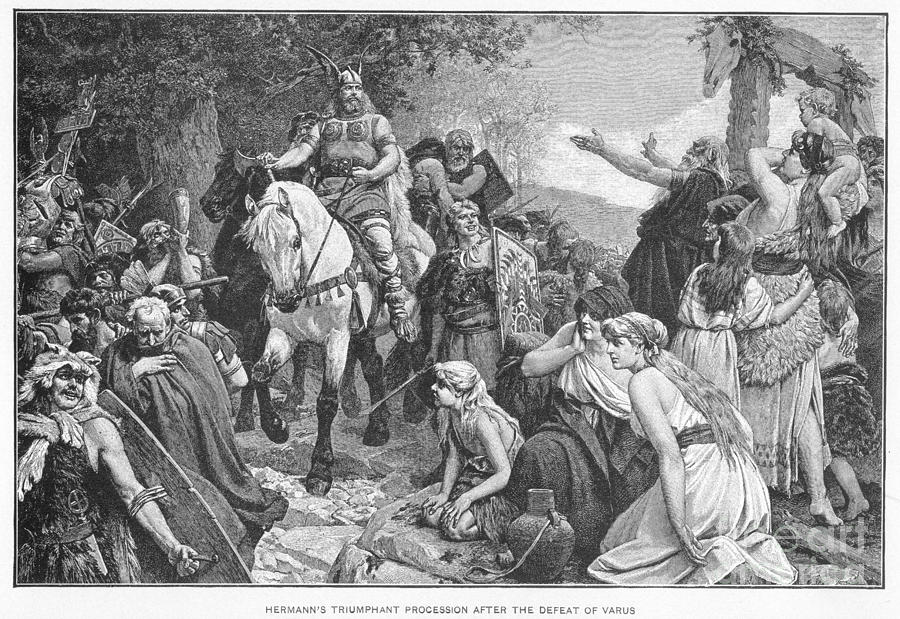Obscure and soaked in mystery, the origins of the Germanic people who thrived in Northern Europe go back thousands of years.
We know, from some historical reports and archaeological discoveries, that during the Bronze Age (3000 – 1200 BCE, ca) they inhabited the territories of modern south Sweden and Norway, Denmark, and North Germany; some of them, the Goths, the Vandals and the Gepidae, then migrated towards the Baltic Sea, whilst others chose to move southward and westward, inevitably clashing against other people, mainly Celtic tribes.
Expanding as they were, soon they had to face the great power of the Mediterranean: Rome. Their first encounter, at the end of the 2nd century BCE, resulted in the painful defeat of the Germanic tribes who had invaded Gaul and northern Italy, annihilated, rather easily, by the troops of Gaius Marius in the year 102 BCE.
It is important to mention, however, that at the time Rome could not properly distinguish between Germanic tribes and Celtic peoples, so it is not entirely possible to say who fought those battles. A well-defined description came with Julius Caesar, who described in detail, for the first time, the Germanic culture, as he incorporated into Rome’s domain all those tribes who had passed the border west of the Rhine river.
In the year 9 BCE, Rome pushed its frontiers eastward, invading and occupying Germanic territories; although at first it seemed that the Roman troops could not be stopped, as soon as 9 CE a rebellion led by the warrior Arminius revealed that a coalition of proud Germanic peoples had the power to force the mighty Rome to withdraw. Such event was so important that during the entire 1st century CE wars were numerous and mainly intended to gather as many information as possible from the enemy. In 98 CE Tacitus, a Roman historian, wrote a detailed description of the Germanic peoples under the name of Germania, undoubtedly one of the most comprehensive and relevant insights into a foreign culture ever written.
Among the many precious information contained in the Germania, is said that the Germanic tribes considered themselves as descended from Mannus, son of the god Tuisto, who was the son of Earth; the three sons of Mannus, according to one version of the genealogy, gave birth to the Ingaevones, the Herminones, and the Istaevones; another version annotated by Tacitus shows instead Mannus having many other children, who would then be the ancestors of the Suebi, the Vandals, and other tribes who mainly inhabited the eastern lands. It is therefore clear that the different peoples were well aware of each other as related by a common origin, but they did not have a proper collective name (those who lived inside the borders of the Roman Empire adopted the term Germani): only during the 11th century a word came in use, diutisc, which with time gave birth to the German adjective Deutsch.
